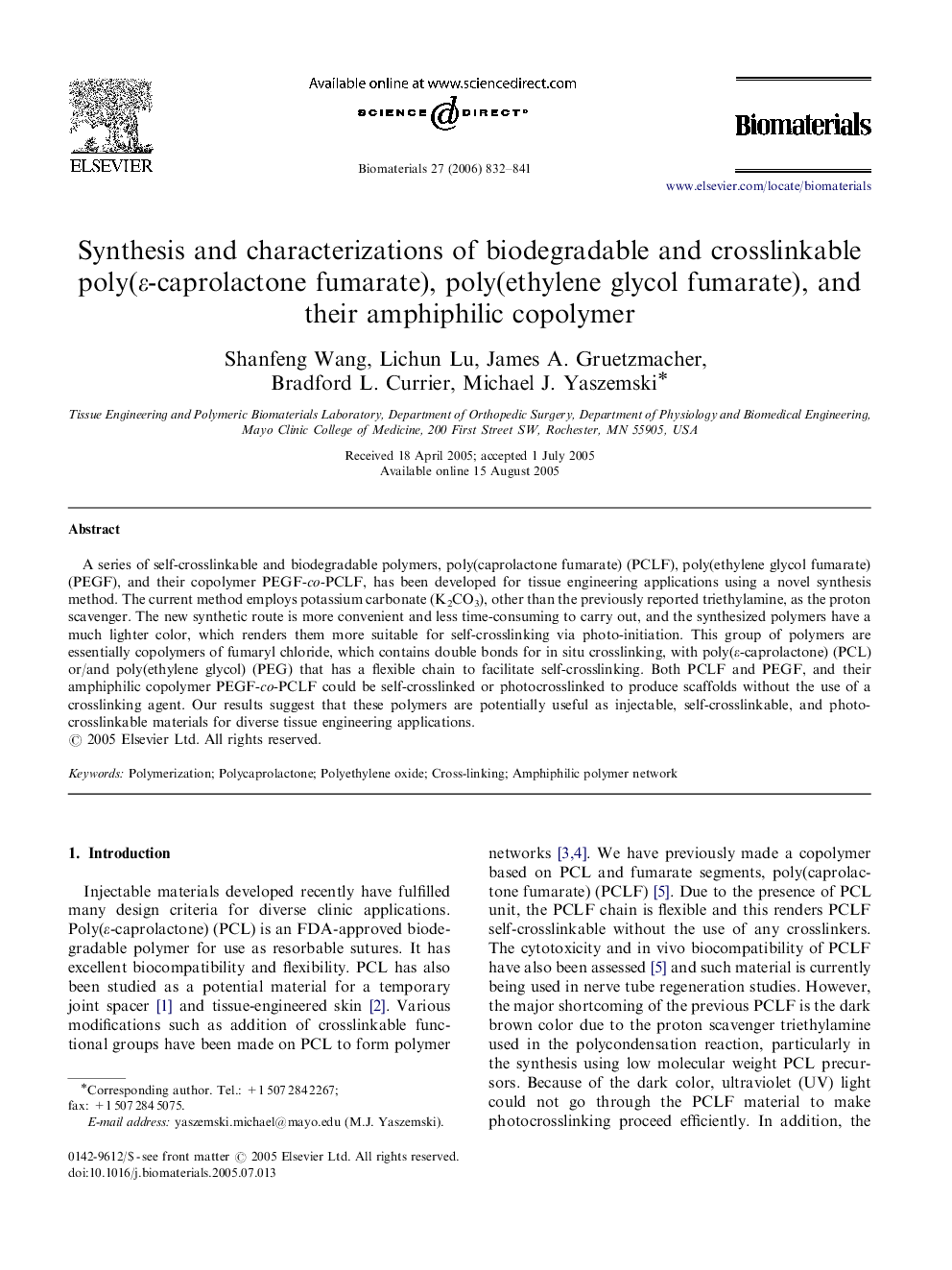| Article ID | Journal | Published Year | Pages | File Type |
|---|---|---|---|---|
| 11654 | Biomaterials | 2006 | 10 Pages |
A series of self-crosslinkable and biodegradable polymers, poly(caprolactone fumarate) (PCLF), poly(ethylene glycol fumarate) (PEGF), and their copolymer PEGF-co-PCLF, has been developed for tissue engineering applications using a novel synthesis method. The current method employs potassium carbonate (K2CO3), other than the previously reported triethylamine, as the proton scavenger. The new synthetic route is more convenient and less time-consuming to carry out, and the synthesized polymers have a much lighter color, which renders them more suitable for self-crosslinking via photo-initiation. This group of polymers are essentially copolymers of fumaryl chloride, which contains double bonds for in situ crosslinking, with poly(ε-caprolactone) (PCL) or/and poly(ethylene glycol) (PEG) that has a flexible chain to facilitate self-crosslinking. Both PCLF and PEGF, and their amphiphilic copolymer PEGF-co-PCLF could be self-crosslinked or photocrosslinked to produce scaffolds without the use of a crosslinking agent. Our results suggest that these polymers are potentially useful as injectable, self-crosslinkable, and photo-crosslinkable materials for diverse tissue engineering applications.
